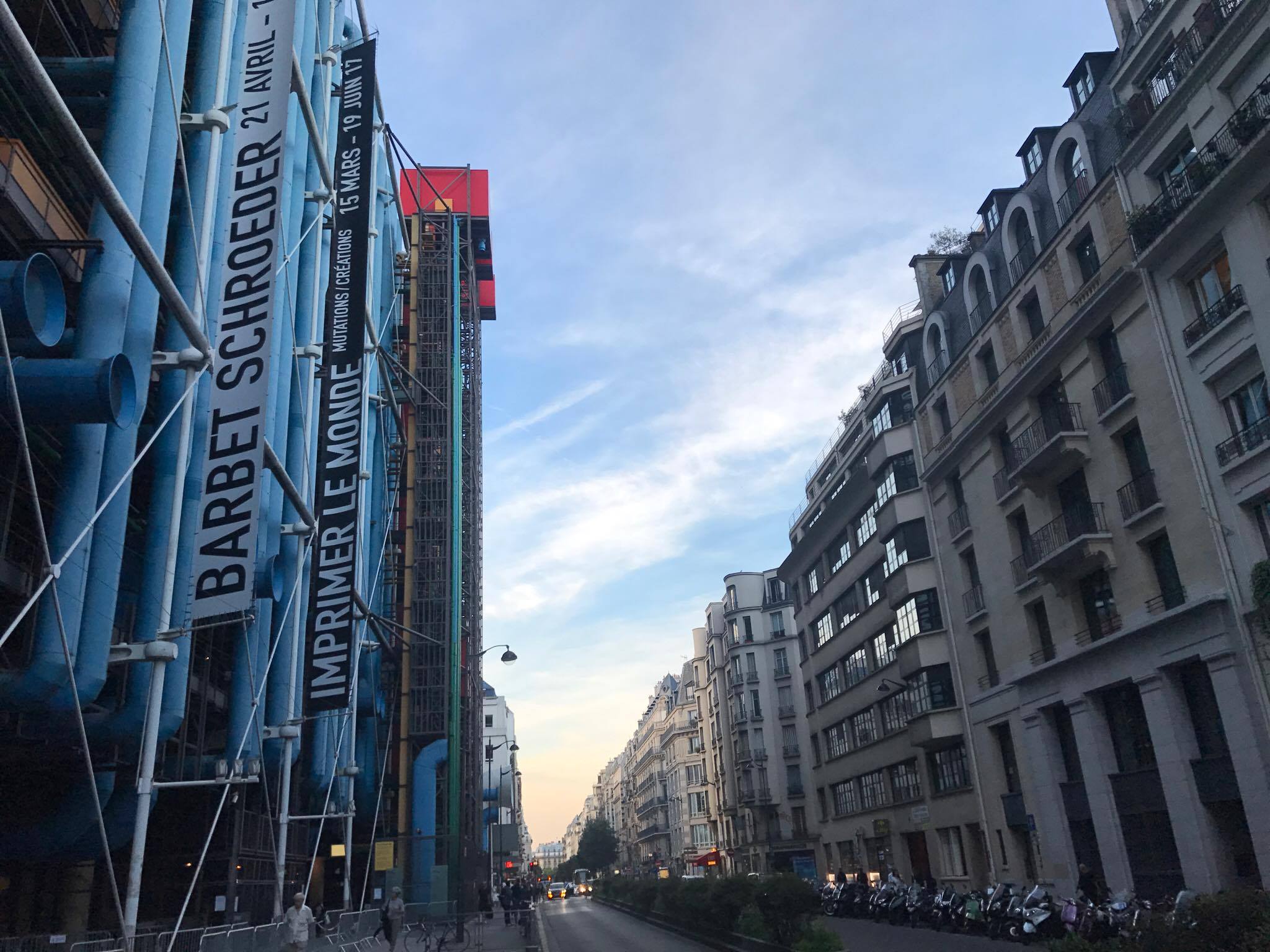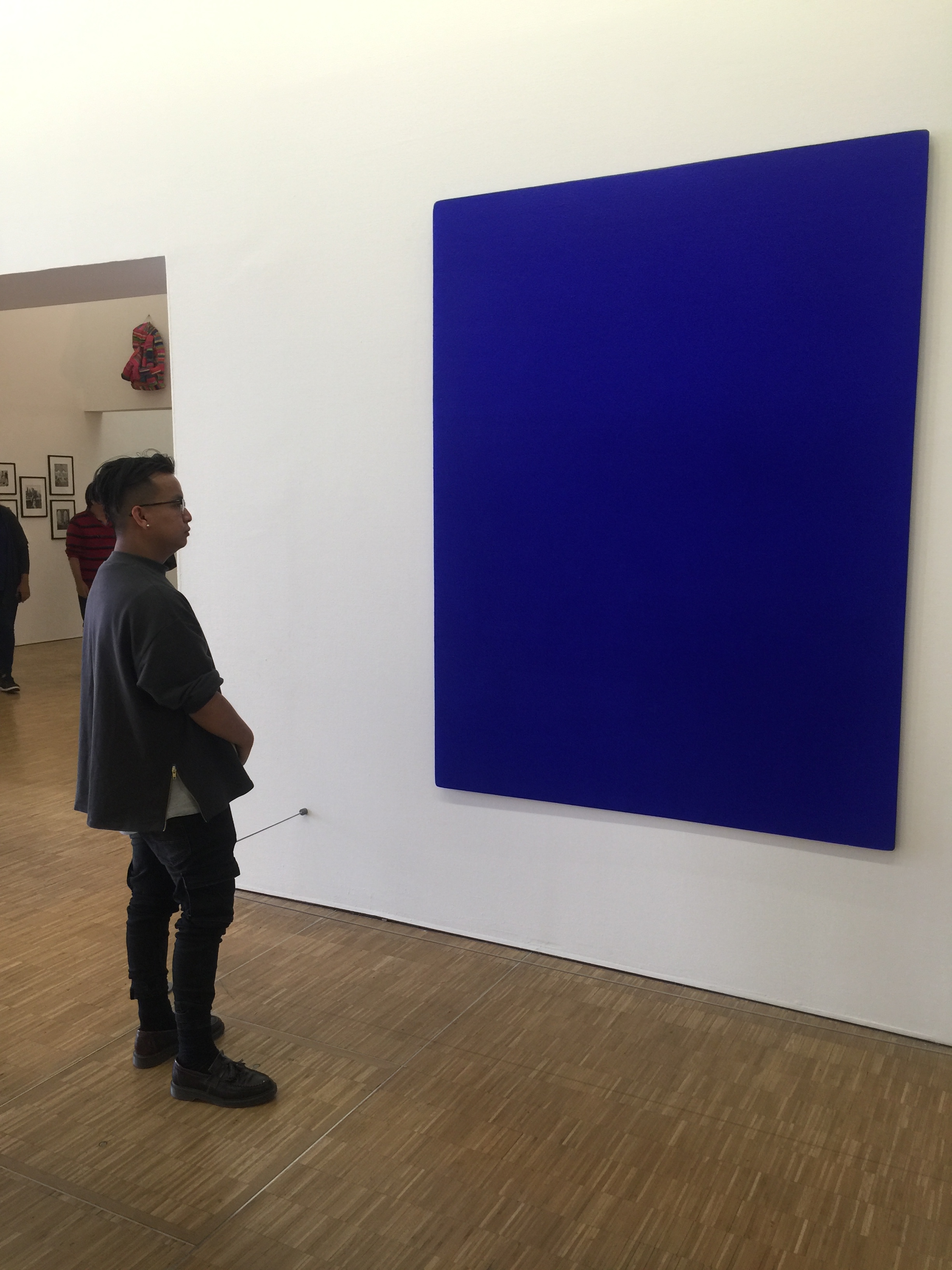Tell us a little bit about yourself—your background, major program of study, reasons for taking this trip, and anything else interesting you want to share (maybe something people might not know about you).
Hi, my name is Kenneth. I am an artist and now entering my fourth year of art school at Kwantlen Polytechnic University. This actually isn’t the first field school that I’ve been on; I was actually on the last field school that took place in Venice and New York in 2015 where we visited the Venice Biennale. I did the last trip quite early on in my art education and it completely changed my art practice and the way I go about thinking about and producing art, so I thought it would be just as beneficial to go on another field school to a major international art event as my art education comes to a close soon. I feel there is no better way to learn about art and it’s context other than to travel to the cities that function as art centres, especially around and with people that share the same interest that you do. You can see my artwork at www.worksbykennethyuen.com
Visiting the Pompidou's newly opened contemporary wing. Kenneth with sketch book under his arm ready to take it on.
What has met or exceeded your expectations or surprised you about Paris (or Kassel) so far?
Paris so far has been nothing but the most enjoyable city in which to learn about art. The idea of embedding art in daily life is just as true here as people make it out to be. The architecture here is absolutely beautiful, so is the way that Haussmannization has planned this city out. Walking around in Paris is an experience in of itself and so is the people watching. One thing that kind of surprised me is the French people themselves; most people try to pen them off as rude, but I wouldn’t really agree. I think the people here just have this real blasé attitude that is part of the culture. It’s just a certain casualness that could possibly come off as rude to people that aren’t used to it. In contrast to the New Yorkers from the last field school, who some people also think are rude but really are just more direct than others, the French are just more casual. Another thing that took me by surprise is how good the food actually is here. As I’ve never really been a fan of French food in the past, I strongly believe one would really have to try French food in France.
Edouard Manet, Asparagus (1880) was Kenneth's assigned painting from the Orsay collection.
Give us some insight into your assigned artwork from the Orsay Musuem. After seeing the work in person in Paris (and any other related art from the same artist or art movement associated with the assigned work), what struck you most about it and/or how did the artwork’s form, content, and context shift for you when seeing it.
The painting from the Orsay that I was assigned was Edouard Manet’s Asparagus (1880), which is a small painterly oil painting of the common household vegetable that Manet produced as a personal gift for one of his patrons in response to a large tip that he received from said patron. Visually (from what I know), the painting wasn’t considered much to behold at the time, but when removed from it’s original context and placed in an art museum the painting brings our attention to the often considered taboo subject of money within the artworld, the relationship between artist and art patron, along with the politicking that goes on and comes with having an art career. A second thing about the painting in regards to content/context is that one would really believe in the Impressionist movement’s Baudelairian belief that “everyday life” was worthy of celebration and that everyday heroism is a worthy subject, steering art away from the church or state that often commissioned work that celebrated the past or lofty ideals from mythology.
Unfortunately, I was unable to see Asparagus in person, as D’orsay shipped it off to Torino on lend for a Manet exhibition. However, I was still very happy to see L'Origine du monde by Courbet.
Kenneth's response piece to Manet was in part a tribute to his recently retired sculpture instructor Kent Anderson.
How did you approach the creative task of responding to this assigned work in studio? What were your challenges as an artist to be in dialogue with the artwork and artist? Would you do anything differently now that you have seen the work in person?
How I decided to approach my artwork that functioned as a response to Manet’s Asparagus was that I wanted to go about the subject matter of the gift/generosity that addressed the relationship between artist and another. So what I decided to do is frame a literal piece of the sculpture studio (that has been demolished due to renovations at KPU) that I received my art education in. I produced a sculpture that straddles a place between elaborate and minimal as an homage to my sculpture professor Kent Anderson who recently retired. I believe this also to be a Baudelairian act of everyday heroism, in the way that an everyday object is worthy of deep celebration and elevation to the realm of high art, and that the relationship between student and mentor is worthy of such a celebration.
In regards to things that I would change after coming to France and seeing the artwork from our class? I would change nothing. Without a doubt, I believe that I was able to take on all the ideas that were taught in class and the content that Manet’s Asparagus held. Plus, I am still able to make the same quality of work I’ve always prided myself on during a time of flux and very little resources, due to the renovations going on at school. I would even argue that this further embodies the intransigent nature of the Impressionists that many art historians have spoken about.
Today’s activity was located at the Pompidou Museum. What were your impressions? What will you take away of the experiences of this day? What are the most memorable moments for you?
So the daily activity that I was assigned to blog about was the class’s visit to the Pompidou. The Pompidou is probably Paris’ premier contemporary art museum/gallery, which would be the equivalent to New York’s Museum of Modern Art (MoMA). Visiting the Pompidou was almost an act of pilgrimage in my eyes because it houses artwork from some of the most important artists in the world. One of the artists that I was very excited to see was Yves Klein, who has functioned as an idol to myself in regards to my art practice. The works from Klein that I was able to see was a painting from the Anthropométrie Bleue series, one of his fire paintings, a monochrome and one his sea sponge sculptures. I was nothing but excited and impressed to see Yves Klein’s work; his signature blue (International Klein Blue) really does radiate and glow as art writers talk about, and the Anthropométries really do hint to a psychodrama when viewed in person.
Other than seeing Yves Klein, I was also very happy to see some other artists that I personally hold in high regard, which includes Brancusi, Fontana, Newman, and Rothko. The Pompidou truly is a world class level art gallery and their permanent collection from the mid-century can really attest to it. Unfortunately, however, the more contemporary section of the Pompidou was closed on the day we visited due to a new exhibition installation (we did go back later to see this floor). On the contemporary floor, I was really hoping to see an Anish Kapoor artwork in person, an artist who also functions as an idol and inspires my practice.
Other than the gallery itself, the area surrounding the Pompidou was also a sight to be seen; there were many wonderful restaurants and bar surrounding it. The Pompidou also has a great slopped plaza/sitting area in front of it that is a great place to relax and sit in the sun. I was also lucky enough to see the sheer spectacle of the White Party here in Paris outside of the Pompidou. It was a great day in general.








